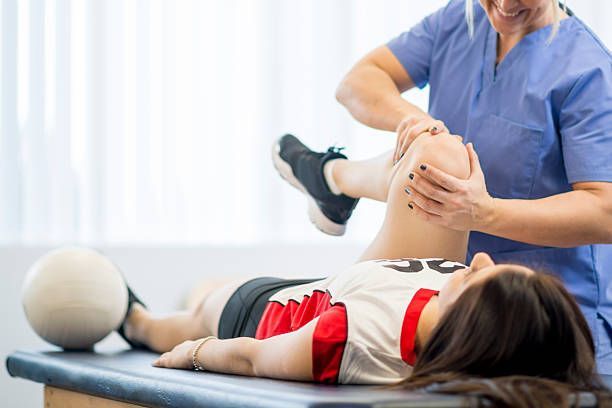Winter Sports Safety
As the winter wonderland unfolds, bringing with it the thrill of winter sports, it's important to remember that safety should always be at the forefront of our snowy adventures. From skiing down picturesque slopes to ice skating on frozen lakes, these activities offer joy and exhilaration but come with inherent risks. In this blog, we'll delve into essential safety tips and precautions recommended by urgent care clinics to ensure your winter sports experiences are not just exhilarating but also secure. Whether you're a seasoned athlete or a beginner, these safety guidelines will help you enjoy the season's offerings while minimizing the risk of injury. If you’ve been injured while playing a winter sport and are searching for “urgent care near me,” UrgiClinic urgent care services may be able to support you.
Understanding the Risks
Participating in winter sports brings a rush of adrenaline and fun, but it's crucial to understand the risks involved. Common injuries in activities like skiing, snowboarding, and ice skating include sprains, fractures, concussions, and even more severe cases like hypothermia or frostbite. These injuries often result from falls, collisions, or improper use of equipment. The cold environment also poses unique challenges, as icy surfaces increase fall risks, and low temperatures can lead to frostbite if exposed skin is not properly protected.
When engaging in outdoor activities, there's the added risk of becoming lost or disoriented, especially in unfamiliar terrains. Understanding these risks comes before mitigating them. Awareness of potential hazards can help you take proactive measures to ensure your safety and enjoy winter sports with peace of mind. Remember that a fun experience is a safe experience, and being informed is critical to avoiding unnecessary accidents on the slopes or ice.
Read this next: First Aid Basics Everyone Should Know
Essential Gear and Equipment
Equipping yourself with the right gear is pivotal for a safe winter sports experience. Each sport demands specific equipment designed to enhance performance and protect you from potential injuries.
For skiing and snowboarding, a sturdy helmet is non-negotiable. Helmets markedly reduce the risk of head injuries in case of falls or collisions. Goggles are essential too, protecting your eyes from glare, wind, and debris. When it comes to apparel, waterproof and insulated clothing is a must to keep you warm and dry. Layering is vital — base layers for moisture management, an insulating layer for body heat retainment, and a protective outer layer to shield against wind and snow.
In terms of sport-specific gear, ensure that your skis or snowboard are in good condition and appropriate for your skill level. Boots should fit snugly, offering both comfort and ankle support. Ice skaters should invest in well-fitted skates with proper ankle support and sharpened blades for better control.
Don’t forget protective padding, especially if you’re a beginner or trying more advanced maneuvers. Pads on the knees, elbows, and wrists can prevent scrapes and fractures. Lastly, having a small first aid kit and a means of communication is crucial, especially when venturing into remote areas. Remember, the right gear not only enhances your performance but also acts as your first line of defense against the unpredictable nature of winter sports. All these factors are even more important for children, whose bones and bodies are still developing. If your child has been in a winter sports accident, a pediatric urgent care may be able to help.
Preparing Your Body
demands of winter sports. These activities often involve muscles that might not be used regularly, so conditioning your body can help you prevent injuries. Start with a general fitness regimen weeks before your planned activities, focusing on cardiovascular endurance, strength, and flexibility. Specific exercises like squats, lunges, and planks can help strengthen your legs and core, which are heavily utilized in skiing and snowboarding.
On the day of the activity, a thorough warm-up is crucial. Begin with 5-10 minutes of light aerobic exercise to increase your heart rate and warm up your muscles. Follow this with dynamic stretches targeting the legs, hips, back, and arms. These movements not only increase your flexibility but also prepare your muscles and joints for the range of motion required in winter sports. A well-prepared body is more resilient and can significantly reduce the risk of strains, sprains, and other injuries.
Read this next: Sprain or Fracture? Knowing When to See an Urgent Care Doctor
Staying Warm and Hydrated
Staying warm and hydrated is paramount for a safe and enjoyable experience in winter sports. Despite the cold, your body can lose a significant amount of heat, especially in extreme temperatures and windy conditions. Dressing in layers is crucial; it allows you to adjust your clothing based on your activity level and the weather. The base layer should wick moisture away from your skin, the middle layer should insulate and retain body heat, and the outer layer should be wind and waterproof. Don't forget a hat, gloves, and proper socks to prevent heat loss from your extremities.
Hydration is often overlooked in cold weather, but it's just as important as in warmer climates. Your body still sweats and loses water through respiration. Carry a water bottle and take regular sips throughout the day. Dehydration can lead to fatigue and impaired judgment, increasing the risk of accidents. If you feel thirsty, you're already dehydrated, so keep sipping water to stay safe on the slopes.
Winter Sports Safety Tips
There are different safety precautions for each winter sport you can participate in. The following section explains how to stay safe in different winter sporting environments.
Skiing and Snowboarding
Skiing and snowboarding demand attention to safety on the slopes. Always ski or board within your skill level and take lessons if you're a beginner. Stick to marked trails and observe all posted signs and warnings. Use a buddy system; never ski or snowboard alone. Be sure to pay attention to changing weather conditions and be aware of the risks of avalanches, especially in backcountry areas. Lastly, respect the right of way — skiers or boarders ahead of you have priority, and it's your responsibility to avoid them.
Ice Skating
Safety in ice skating revolves around proper equipment and awareness. Wear skates that fit well and provide adequate ankle support. If skating outdoors, ensure the ice is thick enough to support your weight. Stick to designated skating areas and avoid overcrowded spots to reduce collision risks.
Sledding and Snow Tubing
For sledding and snow tubing, choose hills free of obstacles like trees, fences, or rocks. Check for a safe, clear stopping area at the bottom. Avoid sledding on crowded slopes and never sled down a hill headfirst. Use sleds that can be steered, and never use makeshift sleds like plastic sheets.
Read this next: Treating Hand Injury or Hand Swelling Causes and Preventions
Protect Your Health This Winter
As we embrace the winter season and its thrilling sports, let's prioritize safety to ensure every snow-filled adventure is not just exciting but secure. Remember, understanding the risks, choosing the right gear, preparing your body, and staying warm and hydrated are your pillars of safety. Follow these guidelines for an injury-free season. And should you need any medical assistance, our walk in clinic, UrgiClinic, is here for you. Enjoy the winter wonders safely, and know we're just a call away for any care you need.













